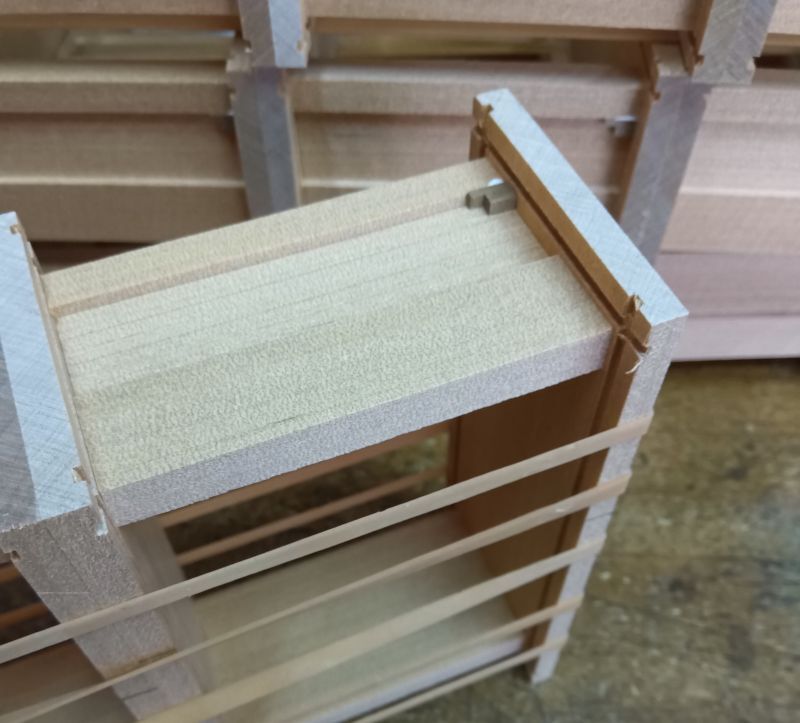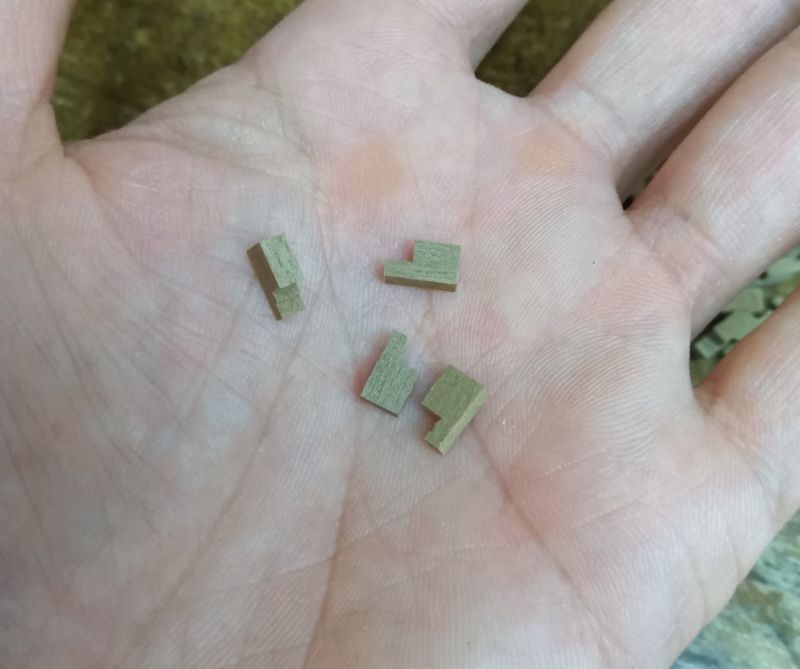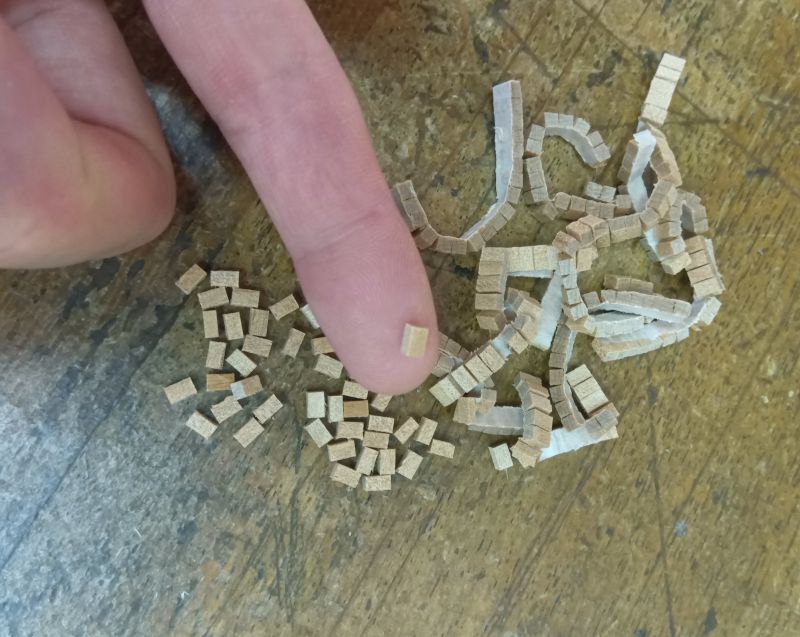Small parts
I am currently making the 5 sun 21 steps Japanese puzzle box, which involves using small parts in its structural components. Generally, in the making of Japanese puzzle boxes, the higher the number of steps, the finer the parts used. The photo shows some of the parts used in the 21-step mechanism. I make the 21-step mechanism in both 4-sun and 5-sun sizes, and using the same parts for both. Because of this, the thickness of the moving panels (Aruki) is the same in both the 4-sun and 5-sun sizes. This relates to the way the mechanism is crafted: the size of the parts changes based on the thickness of the moving panels.
These small parts are produced in large quantities at once, often in the hundreds. They are stored and used not only for the current project but also for future creations. Therefore, many of these parts are made using woodworking machines rather than being completely handcrafted. To make one puzzle box, about 6 to 8 small parts are used (just for the mechanism part). These are crucial parts for creating the "stepped structure" of the puzzle box mechanism. You can see the small stepped parts in the photo. The number of these steps corresponds to the number of moves in the mechanism. In the photo, the small stepped parts have two steps, corresponding to the 21-move mechanism. For example, a 27-move mechanism would have three steps.
Historically, there are two ways to create these stepped structures in puzzle boxes. One method is to carve a deeper groove in the axis of puzzle box and glue small parts to create the steps, as shown in the photo. The other method is to carve the steps directly into the axis using woodworking machines or chisels by hand. Both methods are currently used in production, depending on the craftsman's preference. I use the method of gluing small parts. In my opinion, carving the steps directly into the axis has the disadvantage of making the stepped structure more prone to damage. This is because the axis of box is often made of soft woods such as katsura wood or agathis wood, like other parts of the Japanese puzzle box, and these woods are fragile when finely carved.
Attaching such small parts by "hand" is very difficult (and can be quite frustrating!😂), so it is done using tools like tweezers. Naturally, this is a very painstaking task!😅
These small parts are produced in large quantities at once, often in the hundreds. They are stored and used not only for the current project but also for future creations. Therefore, many of these parts are made using woodworking machines rather than being completely handcrafted. To make one puzzle box, about 6 to 8 small parts are used (just for the mechanism part). These are crucial parts for creating the "stepped structure" of the puzzle box mechanism. You can see the small stepped parts in the photo. The number of these steps corresponds to the number of moves in the mechanism. In the photo, the small stepped parts have two steps, corresponding to the 21-move mechanism. For example, a 27-move mechanism would have three steps.
Historically, there are two ways to create these stepped structures in puzzle boxes. One method is to carve a deeper groove in the axis of puzzle box and glue small parts to create the steps, as shown in the photo. The other method is to carve the steps directly into the axis using woodworking machines or chisels by hand. Both methods are currently used in production, depending on the craftsman's preference. I use the method of gluing small parts. In my opinion, carving the steps directly into the axis has the disadvantage of making the stepped structure more prone to damage. This is because the axis of box is often made of soft woods such as katsura wood or agathis wood, like other parts of the Japanese puzzle box, and these woods are fragile when finely carved.
Attaching such small parts by "hand" is very difficult (and can be quite frustrating!😂), so it is done using tools like tweezers. Naturally, this is a very painstaking task!😅


